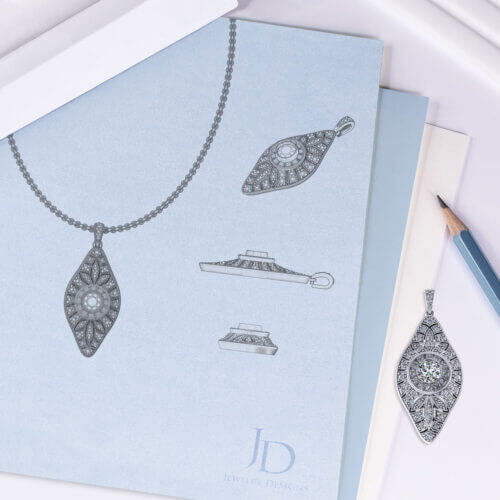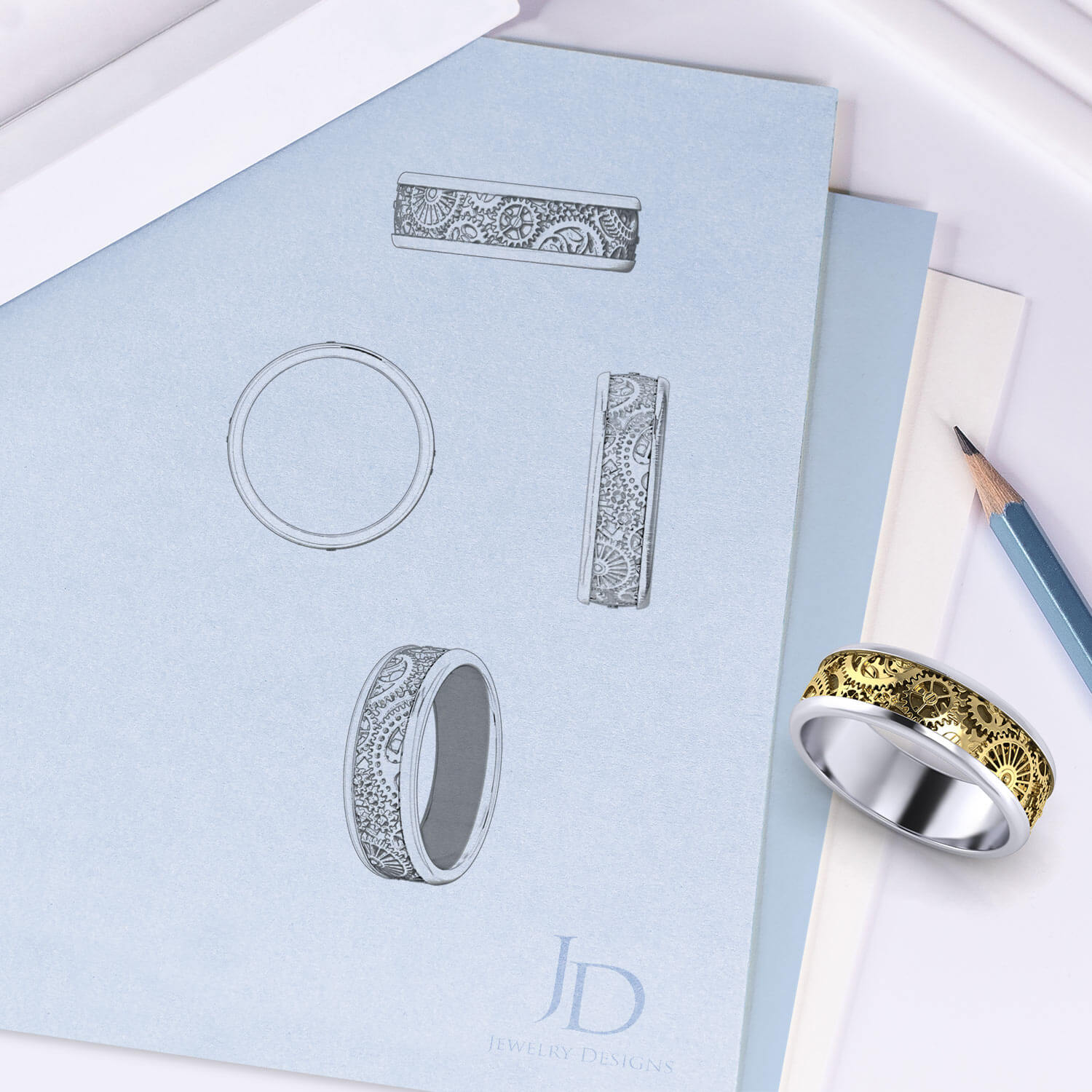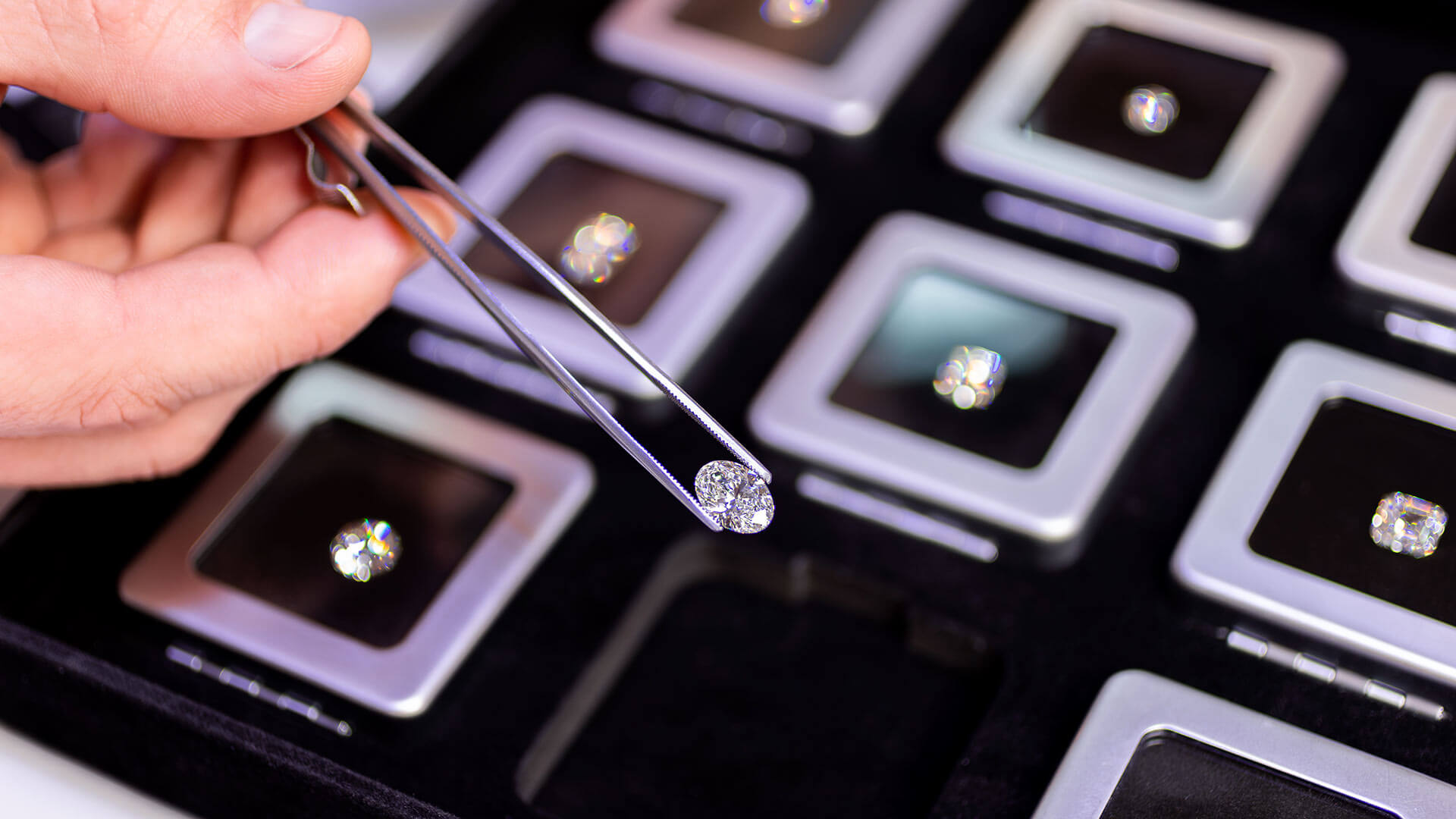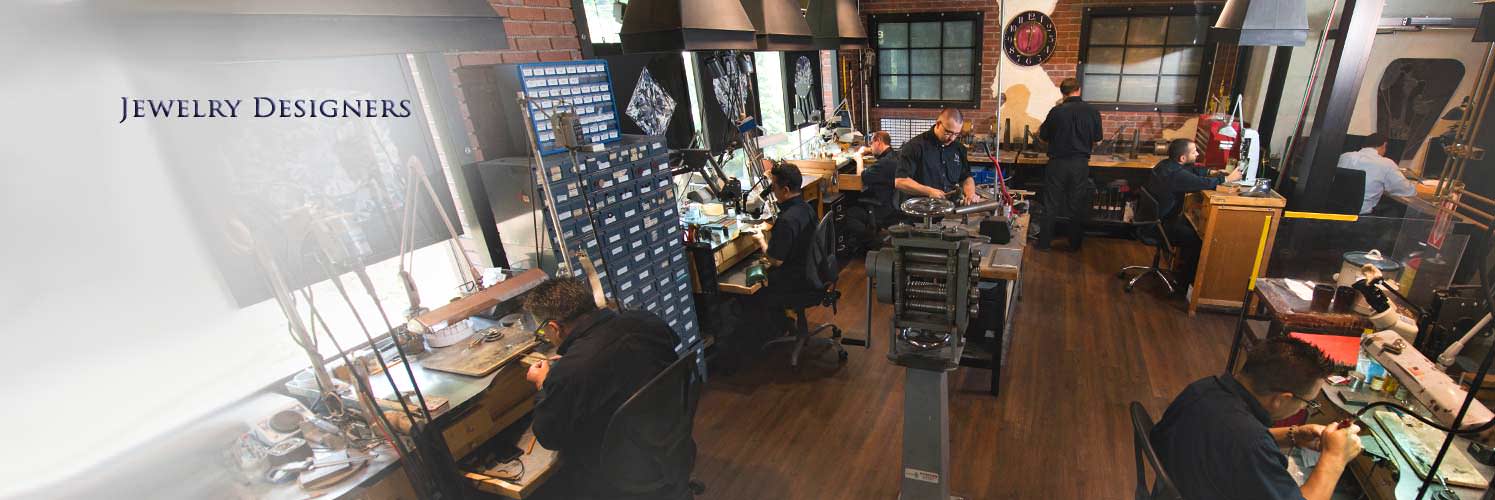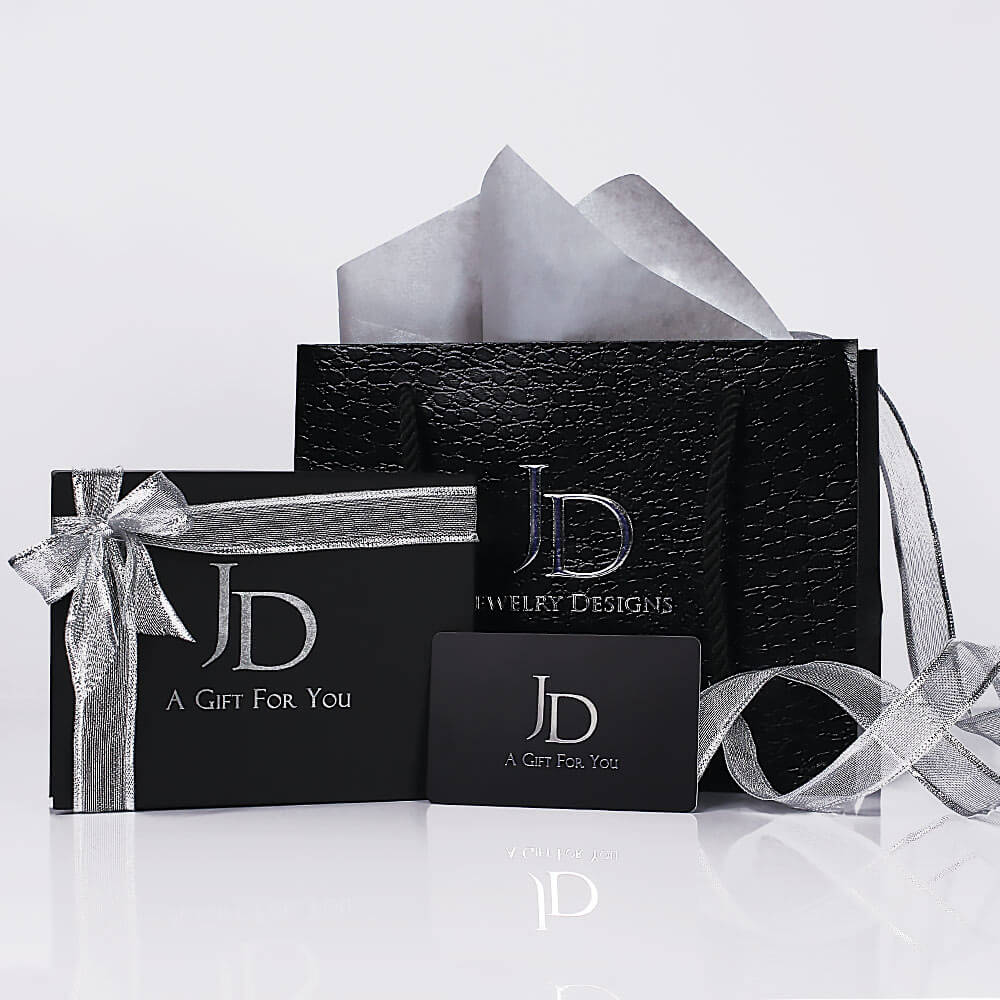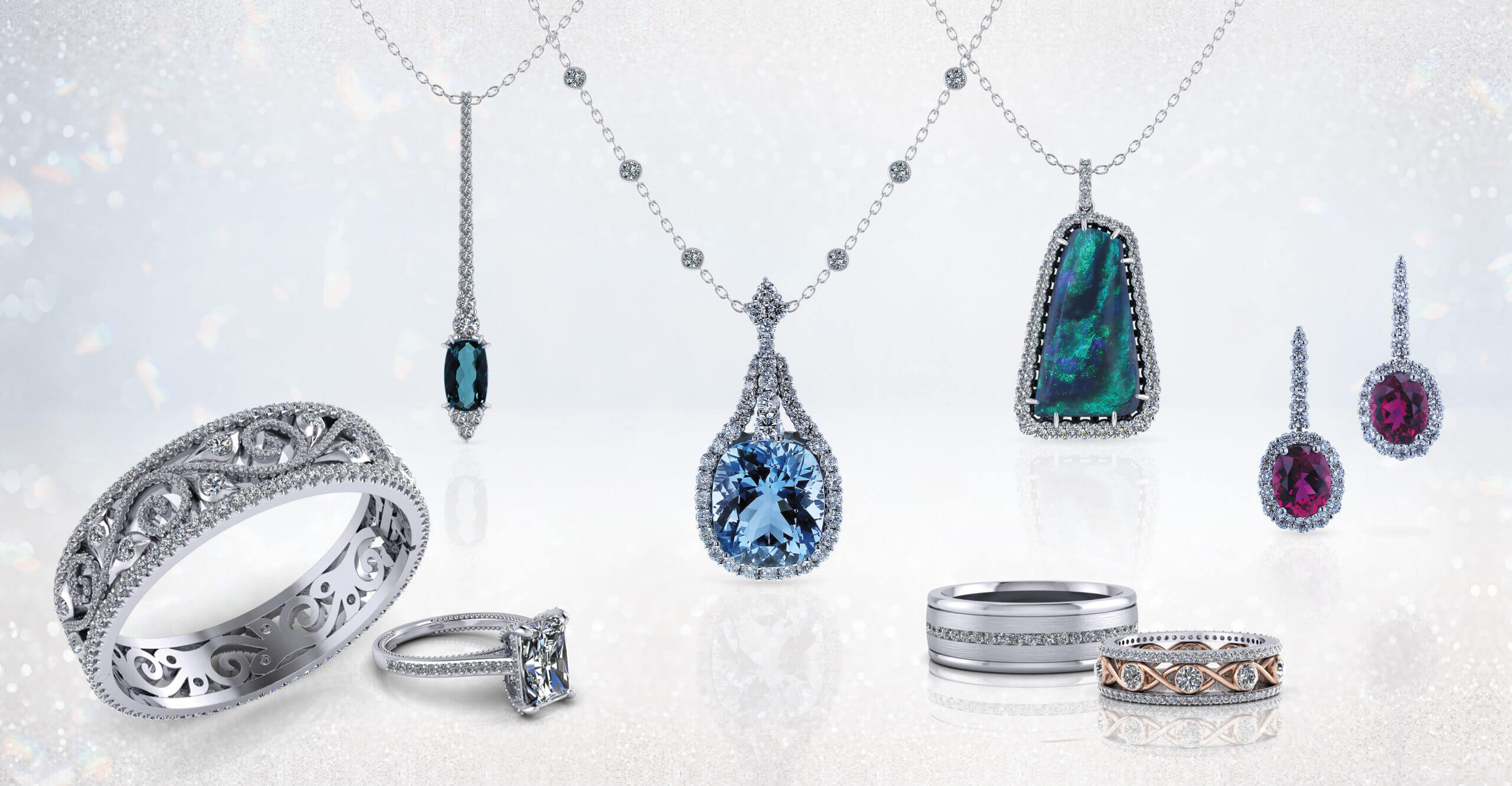Stone Setting
Without the art of stone setting, the dramatic gemstones featured in most fine jewelry would be forlorn. The irony is that, done properly, stone setting in and of itself is not the intended focus. The true goal is to present the gemstone in a way that most flatters it, without dramatizing the method in which it is secured.
Master setters are confronted with the challenge of securing diamonds and gemstones in the least invasive way. The objective when stone setting is to use the minimum amount of material necessary to secure the gem. In doing so the setter must provide maximum durability while the gemstone jewelry is being worn. You need only look at a simple engagement ring with stilted fine wire prongs to understand the importance of this art.
We tend to take it for granted that all of the wonderful twinkling sparklers in our jewelry magically stay in position. In fact, it is made possible by expert stone setting done by a specialized group of jewelers practicing a lost art.
Types of Stone Setting
While we are designing jewelry we can choose from many methods of stone setting, each intended to present gemstones in a different manner. Some stone setting is intended to raise and dramatize a single stone, while others types offer clusters of gems to be viewed as a group. There are stone setting techniques with detailed workmanship that is intended to lead the eye to the featured design. In other cases the setting work is intended to protect a fragile gem from excessive wear.
Here are a few examples of the types of stone setting used in modern jewelry:
Prong Setting
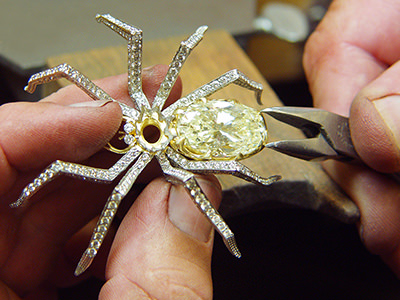
Because of its use in engagement rings, prong setting is familiar to almost everyone. It seems that there are prong set designs to fit every shape and size gem in existence; the most typical being the traditional four or six prong configurations. Prong settings range in style from trellis designs to baskets. The elevation of prong-set stones allows light to enter from the top and sides, and it is unquestionably the most popular method of stone setting for individual featured gems. Prong settings boasts faceted stones in the proudest possible way.
When stone setting in prongs, a jeweler starts with prongs that are considerably longer than those seen in finished jewelry. The long prongs are carefully cut with hand-held rotary tools to excavate approximately one third of the metal to form the seat in which the gem will rest. The carefully carved the seat is shaped to match the shape of the gem. Once seated, the setter will use specialized pliers and a series of pushing tools to wrap precious metal around the stones girdle (edge). After the prongs are snug, they are meticulously trimmed to achieve the desired shape and size.
Bead Setting
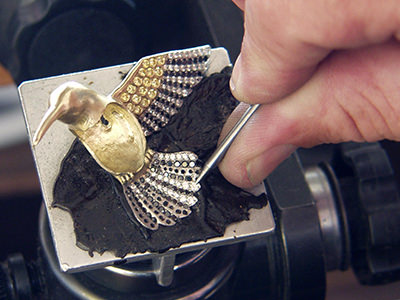
Bead setting is primarily used to display sequences of small diamonds in strands or continuous rows. Enjoying mass popularity during the late 1800’s through the early 1900’s in Georgian, Victorian, Edwardian, and Art Deco jewelry, bead setting fell out of popularity for nearly 90 years. Now it’s back, and stronger than ever. Today, the resurgence of bead setting can be seen in nearly every segment of the jewelry market.
It is this author’s belief that there are two contributing factors to the ever- increasing popularity of bead setting. The first is the renewed interest in white gold and platinum throughout the early part of this century. Since the year 2000, the jewelry industry has been driven by white gold and platinum, and few things in jewelry look better than strands of diamonds set in white.
The second factor is that the emergence of CAD jewelry design has made it possible to create less labor-intensive styles. With miniature beads created by computer automated design it is now possible to create fins bead set jewelry. The tedious stone setting that was done by old world craftsman can now be done in half the time. Once the work of hand tooling, new technology enables designers to position precision bead work throughout an item with greater ease.
Deriving its origin from beads raised with hand tools, artisans drilled holes in solid plates of metal and shaved away gold or platinum to form miniature beads from scratch. As with all art forms, craftsmen with this stone setting expertise diminished over time. With the advent of better models our modern setters can now consistently achieve the same results in less time.
Pave Setting
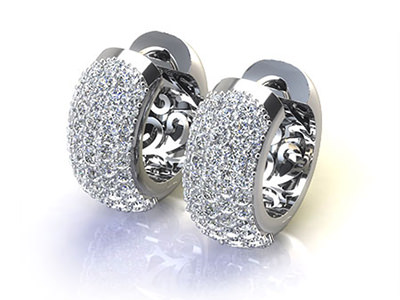
Pave Setting is essentially a type of bead setting. The difference is the arrangement of stones. In pave setting, diamonds are set in fields rather than rows or strands. Pave set diamonds typically cover a broad expanse and share beads to create a diamond encrusted appearance. The bold diamond surfaces created by pave setting are breathtaking and coveted in fine jewelry.
Bezel Setting

Perhaps the oldest known way of securing a stone, bezel setting is believed to be derived from the name of Bezalel, the first recorded jeweler, renowned for building the Ark of the Covenant. Still in popularity today, bezel setting is used to secure most cabochon cut gemstones along with many of the faceted stones used in fine jewelry. While often used in crude and primitive designs, bezel setting can also be seen in exotic fine jewelry in 5th Avenue stores.
Bezel set stones are seated in thin strips of precious metal, formed to the shape and size of a stone. Once seated, gems and semiprecious stones are placed inside. The metal strip is then trimmed to a depth that marginally overlaps the gem. Using smooth metal tools, artisans burnish the metal by rubbing it with force to roll it over the edge of stones in order to lock them in position.
Gypsy Setting

Similar in appearance to bezels, gypsy setting also uses a band of gold or platinum to surround the featured gem. The difference is that the walls used for gypsy stone setting are thicker than those used in bezel set jewelry.
In order to gypsy set stones, the heavy metal edging supporting the stone must be hammered into position by a craftsman with extreme care. Once the cavity matches the shape and pitch of the gem, the setter will use a chasing tool or small pneumatic hammer to peen precious metal over the stones edge. This delicate process can only be done after a perfect fit has been achieved by the hands of an experienced jeweler.
Semi Bezel Setting
Semi bezel setting would be more appropriately named semi gypsy setting. Like the gypsy, semi bezels are crafted from wide walls of metal that must be carved with rotary tools and gravers to seat the stone.
Semi bezels are partial bezel, which only cover the extremities of a gem. Aside from the fact that this stone setting is a bit easier to perform, the semi bezel setting procedure is identical to that of a gypsy setting.
Channel Setting
Once the rage of the 80’s and 90’s, channel setting maintains a solid presence in contemporary jewelry. With clearly defined edges and clean, flowing lines, the walls of channel set stones provide designers with distinct borders and edges.Small stones seated side by side are suspended in walls slotted in strips of gold and platinum. Either uniform in size or gradually tapering, strands of channel set stones can be set in rows, or ribbon throughout a piece of fine jewelry.
Channel setting is achieved when a jeweler uses a rotary cutter to create a seat in precious metal that is grooved to the size of a gem. Once the setting wall is prepared, the stone is carefully leveled into its seat. Using a precision handheld impact hammer, precious metal is carefully chased over girdle to secure the stone at the desired angle.
Flush Setting
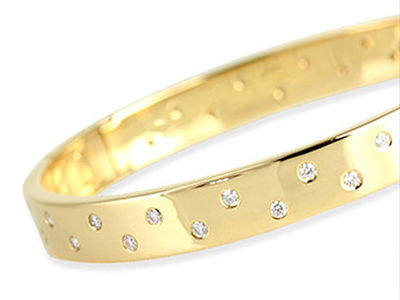
Flush setting is appropriately named because it enables designers to create jewelry featuring stones that lie flush in the surrounding metal. This can be done with a single large stone seated in a broad, level surface; however, this form of stone setting is most often used to set smaller stones to create a spangled look. Flush set stones can lend a scattered glitter to flat or domed areas.
After drilling a pilot hole into gold or platinum, the stone setter uses a hand- held, flexible shaft to guide burs to open seats to accommodate the jewels. With stones positioned flush, the metal the surface is gently manipulated with a chasing tool to lock them in place. Once secure, the edge of the work is trimmed and neatly burnished with a bright edge to accentuate the glistening gem.
Millgrain Setting
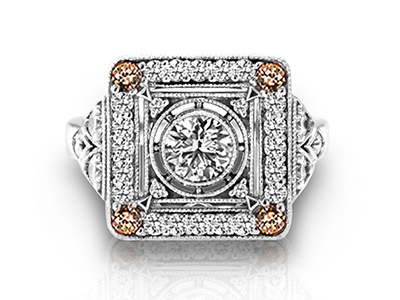
Having risen to popularity in the early 1900’s in Edwardian and art Deco jewelry, millgrain setting has once again peaked in demand, reemerging as a dominant element in retro jewelry design. In actuality, millgraine or millgraine, as it is sometimes known, is not stone setting at all. Millgrain is the fine, beaded finish that streams along ridges and the troths in which bead set stones are nestled.
The delicate ribbed border portrayed by millgrain, results from formation of tiny beads tooled onto ridges that are either cast, or cut into metal with jewelers gravers. These miniature beads are usually hand tooled with rollers and cutters to form uniform borders. The fine texture of millgrain setting allows jewelry designers to establish subtle shapes that neatly define tightly grouped fields of diamonds to give the jewelry classic vintage appeal.

